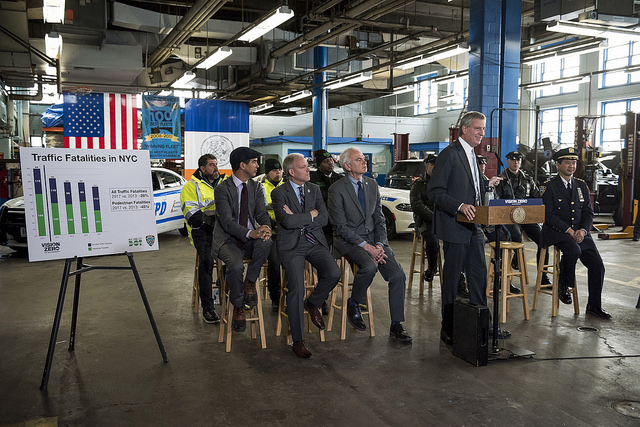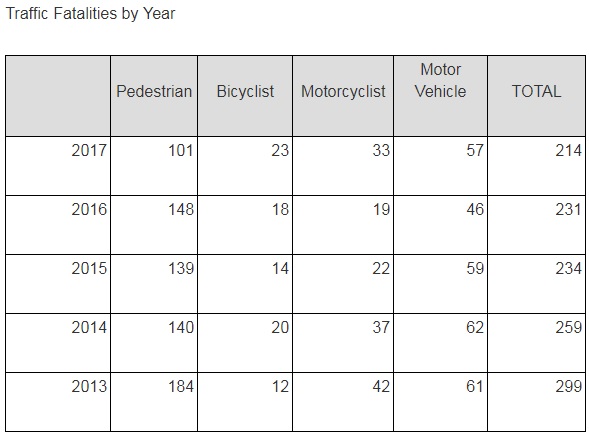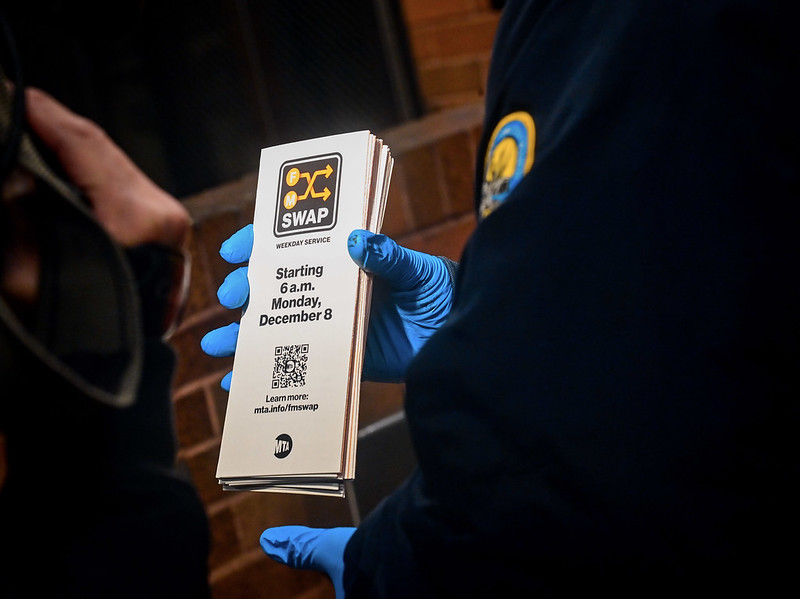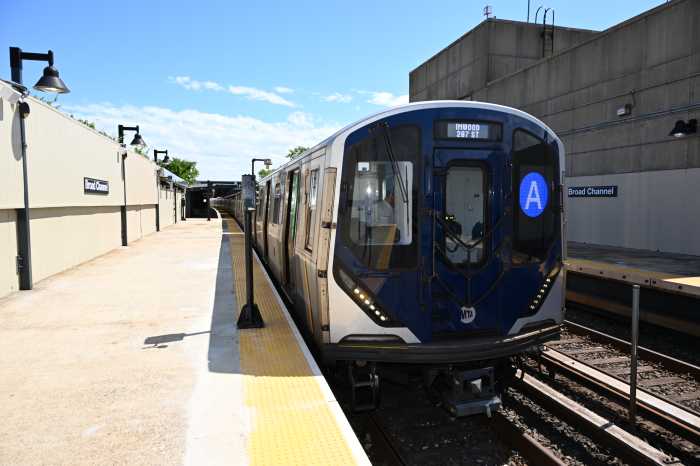Mayor Bill de Blasio visited an NYPD garage in Woodside on Monday to announce that 2017 saw the fewest traffic fatalities on record, with Queens beating its previous record low from 2011.
Citywide, pedestrian fatalities fell 32 percent since 2016 with 101 pedestrian deaths in 2017 compared to 148 in 2016. Overall, 214 people were lost in traffic crashes in 2017 compared to 231 in 2016. These numbers mark the lowest level of traffic deaths since the city began keeping records in 1910.
In Queens, there were 59 traffic fatalities in 2017 compared to 65 in 2016, marking a 9 percent decline. The previous low was recorded in 2011 with 63 traffic deaths.
“Everyone knows when we think about this history in our city, when we think about the lives that were lost our minds immediately go to Queens Boulevard,” de Blasio said. “For too long in this city the idea was tolerated that there was a major thoroughfare that was known as the Boulevard of Death. That was never acceptable.”
Councilmen Jimmy Van Bramer, who represents Long Island City, Sunnyside, Woodside and parts of Astoria, and Robert Holden, who represents Middle Village, Maspeth, Glendale, parts of Woodside and Ridgewood, attended the press conference to tout the initiative’s successes.
Holden, the former Juniper Park Civic Association president, often criticized the initiative and the Department of Transportation’s (DOT) plans to add more bicycle lanes in his district.
But he acknowledged that his criticism “was wrong.”
“I was one of those Doubting Thomases on the civic level,” he said. “We’ve heard it before from mayors: ‘We’re going to correct this, we’re going to slow them down.’ I want to thank the mayor. You can’t argue with saving lives. You can never argue that that’s paramount here.”
Holden added that his district is experiencing issues with the traffic app Waze, which provides drivers with alternative routes to avoid traffic. The councilman said that because of traffic calming measures installed in major thoroughfares like Queens Boulevard, more drivers are using side streets to circumvent traffic.
“The bigger picture here is in Maspeth, we don’t have a subway,” he said. “In Middle Village, we live a mile and a half away from a subway so we need to address those concerns. Public transportation is important obviously if were going to change people’s mindsets on driving everywhere in New York.”
One of the biggest projects that the city focused on as a result of Vision Zero was the re-imagining of Queens Boulevard. The major thoroughfare was referred to as the Boulevard of Death because of the high number of traffic fatalities. In 1990, 18 people were killed at the thoroughfare.
The first phase of the redesign began in 2015 and included the installation of a protected bike lane. It covered the 1.3-mile stretch of the thoroughfare between Roosevelt Avenue and 73rd Street.
In the summer of 2016, the DOT began the second phase of the redesign, which covered 74th Street through Elliot Avenue. The plan faced backlash from Community Board 4, which approved the redesign with one major stipulation: no bike lanes.
Prior to the Community Board’s vote, a group of bicyclists gathered at the spot where Asif Rahman, 22, was killed after he tried swerving away from a double parked car with his bike. Rahman was hit by a truck and ever since the accident in 2008, his mother Lizi has advocated for major safety upgrades.
The mayor approved the plan despite the board’s vote and the third phase from Eliot Avenue through Yellowstone Boulevard was finished last year.
The fact that no one has died on Queens Boulevard in three years is one of the biggest successes in this city,” Van Bramer said. “You cannot understate how important it is that 10 years ago, five years ago, 20 years ago it was absolutely normalized that 10, 12, 17 people per year where killed in crashes on Queens Boulevard.”
He also spoke about 8-year-old Noshat Nahian who was hit and killed by a truck in 2013 as he was crossing Northern Boulevard on his way to school.
“The face on his mother, the agony she was enduring is something that you would never want any human being to face,” Van Bramer said. “That family was so devastated that they moved back to Bangladesh.”
According to data from the National Highway Traffic Safety Administration, traffic fatalities have increased nationwide more than 13 percent from 2013 through 2016. In New York City, there has been a 28 percent decrease in traffic fatalities since 2013.
“I’m really proud of Queens today because Queens is leading the way and Queens Boulevard is leading the way because if you can make Queens Boulevard safer you can make any street in this city or country safer,” Van Bramer said.




































